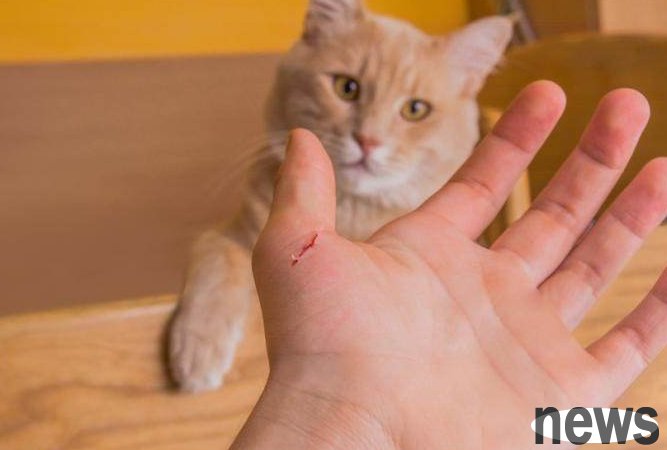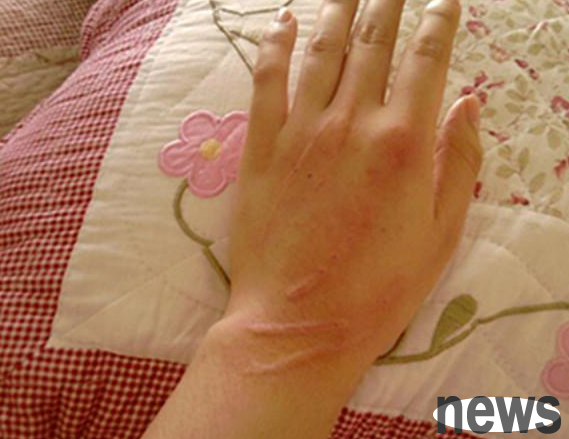The kitten’s round little head, cute eyes, and weak body are really cute. However, seemingly cute and cute cats actually carry risks. A 1-year-old boy had a high fever that persisted for many days, and upon investigation it turned out to be cat-scra...
The kitten’s round little head, cute eyes, and weak body are really cute. However, seemingly cute and cute cats actually carry risks.
A 1-year-old boy had a high fever that persisted for many days, and upon investigation it turned out to be cat-scratch disease! The 1-year-old had an inexplicable fever for half a month, and it was actually related to cats...
The 1-year-old boy's high fever that persisted was "cat-scratch disease"

1-year-old Lele lives in rural Qichun. More than a month ago, my mother felt that his forehead was hot and measured his temperature, which was 38.5℃. After being treated in a local hospital for nearly half a month, Colale kept having high fevers repeatedly, often exceeding 39°C.
After so long of treatment, the condition has not improved, and the family is very worried. At the end of last month, the family carried Lele to Wuhan Children's Hospital. After COVID-19 was ruled out, Lele was admitted to the Department of Integrated Traditional Chinese and Western Medicine of the hospital with "unexplained fever."
Generally, when the human body is infected by bacteria or viruses, a high fever will persist. Lele's various laboratory test results were within the normal range, and the virus test results were not abnormal.
His condition once deeply puzzled doctors. "Could he be infected with parasites? Or other pathogenic microorganisms?" The doctor turned his attention to Lele's living environment. After asking the family members, they discovered the problem.
It turns out that Lele’s grandfather loves to raise cats, and he will take home stray cats to feed when he encounters them. At present, Lele's family has a total of five or six cats, including pet cats that they raise themselves and stray cats that they later took in.
Following this clue, the doctor suspected that Lele's unexplained fever was related to cats, and that he might be suffering from "cat-scratch disease." However, doctors repeatedly checked and found no traces of cat scratches on Lele's body, nor did he show any typical symptoms of "cat-scratch disease" such as swollen lymph nodes.

In order to clarify the condition, Lele’s blood sample was sent to the laboratory for further high-throughput sequencing examination. Sure enough, Bartonella henselae infection (a special pathogen) was found, and this evidence can confirm that Lele is a "cat-scratch disease."
The cause of the disease was found, and after some symptomatic treatment, Lele's body temperature finally dropped back to normal.
You can get "cat-scratch disease" even if you haven't been scratched by a cat.
You have heard a lot about "rabies". What is "cat-scratch disease"?
The full name of "cat-scratch disease" is "cat-scratch disease lymphadenitis". As the name suggests, it is a type of lymphadenitis caused by cat scratches.
The “real culprit” causing this disease is a small rod-shaped bacterium called Bartonella henselae. Cats are the primary host and can be transmitted to humans if an infected cat scratches, bites or licks broken skin.
"Cat-scratch disease" can not only be transmitted from cats to humans, but humans may be injured if they come into close contact with dogs, rabbits, monkeys, pigs, and cows infected with "Bartonella".
"Why did I get sick after playing with kittens?" Lele's parents were confused. Are everyone else in the family okay?
Tang Jianqiao, chief physician of the Department of Integrated Traditional Chinese and Western Medicine at Wuhan Children's Hospital, explained that "cat-scratch disease" does not spread from person to person. Most "cat-scratch diseases" are benign and self-limiting, and usually do not lead to serious complications. However, "cat-scratch disease" in people with low immune function may induce cardio-cerebral complications, and in rare cases may lead to death.
Relatively speaking, children and people with low immunity are more likely to be infected. The incubation period of the disease is 2-6 weeks, and in a few cases it can last for several months or even more than a year. Many people do not associate the cause of the disease with cats.
At the same time, doctors remind you that you may get "cat-scratch disease" even if you are not scratched by a cat. Close contact with an infected cat may cause the disease.

If you are scratched by a cat and have these 3 symptoms, you should see a doctor.
If you have been scratched and bitten by a cat, how do you know if you have this disease? Generally speaking, the more typical symptoms of "cat scratch disease" are as follows:
Red rash or papules. It does not mean that after being scratched and bitten by a cat, the patient's body will react immediately. The incubation period is about 3-10 days. After the incubation period, the patient's body will show symptoms, such as rash, erythema, and raised red maculopapular rash. Common symptoms are swollen lymph nodes around the wound, accompanied by body fever and fever. Lymph nodes will appear in the body within two weeks. If you find similar symptoms, you should go to the hospital for examination in time. After being bitten or scratched by a cat, you should also apply iodine to the damaged skin immediately.
There are abnormalities in the eyes. Cat-scratch disease can cause symptoms such as sudden loss of vision, edema of the optic disc, and other neuroretinitis. If the condition worsens, it can also cause symptoms such as liver dysfunction and visual impairment. Eye lesions of cat-scratch disease are rare and occur mostly in children. Mainly conjunctivitis, choroiditis, and uveitis.
Systemic symptoms. The main symptoms include headache, chills, general weakness, low-grade fever, loss of appetite, nausea or vomiting, etc. There is no specific drug that can quickly treat cat scratch disease, so once the above symptoms appear, you should seek medical attention as soon as possible for symptomatic treatment. Depending on the condition, appropriate symptomatic treatment can be carried out, such as using antipyretic, analgesic and other drugs.
Do this immediately if you fall into a cat's "trick"
In recent years, there have been reports at home and abroad of cases of eye damage or even blindness after being licked or scratched by cats. Seeing this, many cat owners must be trembling: How can they happily "suck cats" if they are so scary?
In fact, blindness is a very extreme case of "cat-scratch disease", and there is no need to talk about cats becoming more discolored.
Cat-scratch disease, also known as "cat-scratch lymphadenitis", is lymphadenitis caused by being scratched by a cat. What makes "cat suckers" relieved is that not all cats will attract people. As we all know, cats need to regularly remove fleas and ticks from their bodies. This is because after fleas and ticks are infected with the small rod-shaped bacterium called "Bartonella", they bite the cat and infect the cat. If the sick cat scratches people, the "cat suckers" will be infected..
Director Tang Jianqiao emphasized that Bartonella henselae is an opportunistic pathogen. Not all cats scratching people will cause "cat-scratch disease". Cats themselves can transmit the bacteria to people. Moreover, even if you suffer from "cat scratch disease", it can be cured with symptomatic treatment.
What should you do if you are accidentally scratched or bitten by a cat, dog or rodent? After being scratched or bitten by a pet, you should immediately wash the scratch and bite area thoroughly with soap and water and disinfect the wound. In addition to injecting rabies vaccine immediately, you also need to pay more attention in the later stage. If you find unexplained lumps or abscesses on your body, you should seek medical treatment promptly and inform the doctor that you have been scratched by a cat or dog.
Do these few things to "suck cats" without fear
To avoid the risk of infection, the key lies in people. These things should be done regularly:
Cats should be dewormed and cleaned regularly, their nails should be trimmed regularly to avoid cat scratches, and pets should be injected with various vaccinations in a timely manner. You should also maintain hygiene at home, disinfect regularly, eat clean food such as cat food, and clean your pets frequently to reduce the bacteria on your pets.
Not all cats carry cat-scratch disease virus. Regular visits to pet hospitals for vaccinations and deworming can effectively remove bacteria on pets and keep them at home for a long time.
Wash your hands promptly with soap and water after petting a cat. If you have wounds on your body, do not let the cat lick it. Especially if you have children or people with low immunity, it is best not to come into contact with the cat to avoid being scratched or bitten.
In addition, humans still need to learn to get along with animals scientifically, respect the temperament and habits of small animals, and do not go overboard when teasing cats to prevent cats from scratching and biting due to excessive stimulation. In addition, do not tease stray cats and dogs at will. Small animals that are left unattended and raised are more likely to carry germs and are more aggressive.
If you want to adopt a stray cat, you must have a physical examination for the cat in advance and confirm its health before taking it home.
Don’t panic when faced with “cat-scratch disease”. Do a good job of pet health care and hygiene every day, and don’t abandon your pets because of this!